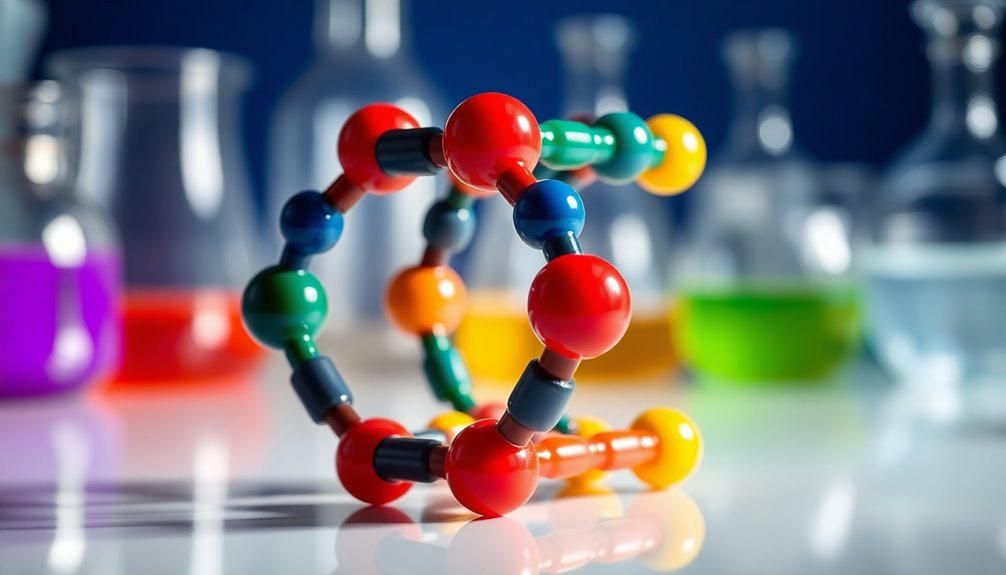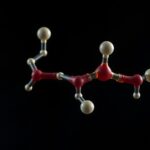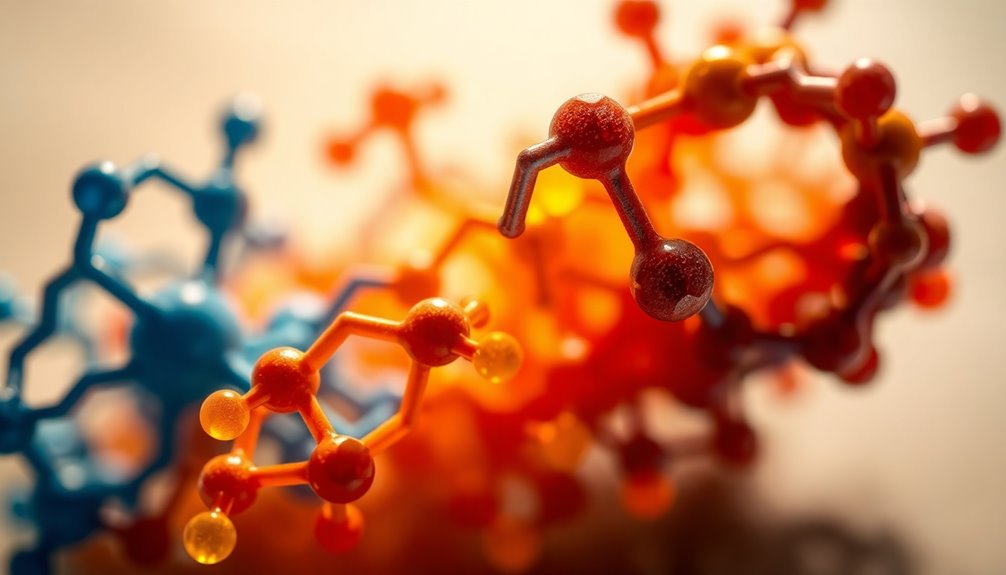An aromatic ring is a special cyclic structure in chemistry that features delocalized π-electrons, which makes it stable and unique. You'll often see benzene as a classic example, made up of six carbon atoms arranged in a ring. These rings follow Hückel's rule, meaning they contain 4n + 2 π-electrons. This delocalization equalizes bond lengths, creating a balance between single and double bonds. Aromatic compounds are known for their distinct odors and reduced reactivity compared to other structures. If you're curious about how these properties impact chemical behavior, there's plenty more to uncover.
Key Takeaways
- An aromatic ring is a cyclic structure with delocalized π-electrons, following Hückel's rule of 4n + 2 π electrons.
- Benzene, a six-carbon compound, is the most common example of an aromatic ring.
- Aromatic compounds exhibit unique properties, including high resonance energy and distinctive odors, while being less reactive than aliphatic compounds.
- Aromatic rings can be homocyclic (only carbon) or heterocyclic (containing other elements like nitrogen or oxygen).
- The stability of aromatic rings arises from resonance, where electrons are shared across multiple atoms, enhancing chemical behavior.
Definition of Aromatic Rings

An aromatic ring is defined as a cyclic structure that adheres to Hückel's rule, meaning it contains 4n + 2 π electrons, where n is a non-negative integer. The most notable example is benzene, a planar arrangement of six carbon atoms that allows for the delocalization of π electrons.
This delocalization leads to resonance stabilization, resulting in equal bond lengths between the carbon atoms, creating bonds that are neither purely single nor double. For a compound to maintain aromaticity, it must be planar, facilitating effective overlap of p orbitals.
Aromatic rings can be homocyclic, containing only carbon atoms, or heterocyclic, which include other elements like nitrogen, oxygen, or sulfur within the cyclic structure.
Characteristics of Aromatic Compounds
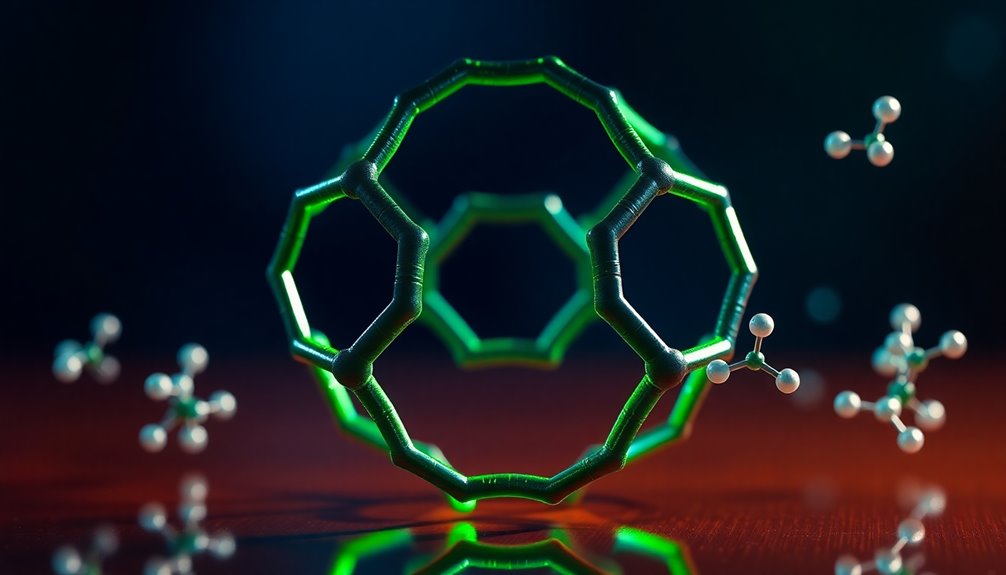
Aromatic compounds stand out due to their unique characteristics that arise from their cyclic, planar structures. This arrangement allows for the effective delocalization of π electrons, which is essential for their stability.
According to Hückel's Rule, these compounds must have a total of 4n + 2 π electrons, enhancing their resonance stabilization. As a result, they exhibit equal bond lengths, intermediate between single and double bonds.
Aromatic compounds, whether in homocyclic systems like benzene or heterocyclic systems containing non-carbon elements, showcase remarkable chemical diversity. They also possess distinct physical properties, including unique odors and lower reactivity compared to aliphatic compounds, largely due to the delocalization of electrons within the ring.
Historical Development of Aromaticity
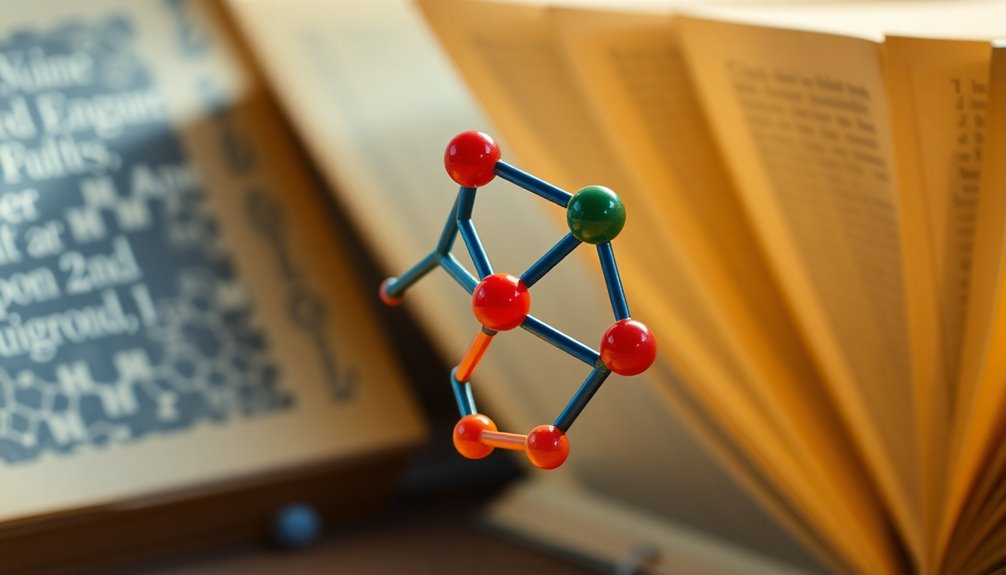
Although the concept of aromaticity has evolved markedly since its inception, its roots trace back to the mid-19th century. August Wilhelm Hofmann introduced the term "aromatic" in 1855, linking certain compounds' chemical structure to their characteristic odors.
Then, in 1865, August Kekulé proposed the cyclohexatriene structure for the benzene ring, suggesting alternating bonds, which later evolved into the resonance model.
J. J. Thomson expanded this by introducing delocalization, asserting that all carbon atoms share equivalent electrons.
By 1925, Sir Robert Robinson coined the term "aromatic sextet," highlighting the six π electrons that underpin benzene's exceptional stability.
This rich history of research continues to shape our understanding of aromatic hydrocarbons and their unique properties.
Types of Aromatic Compounds
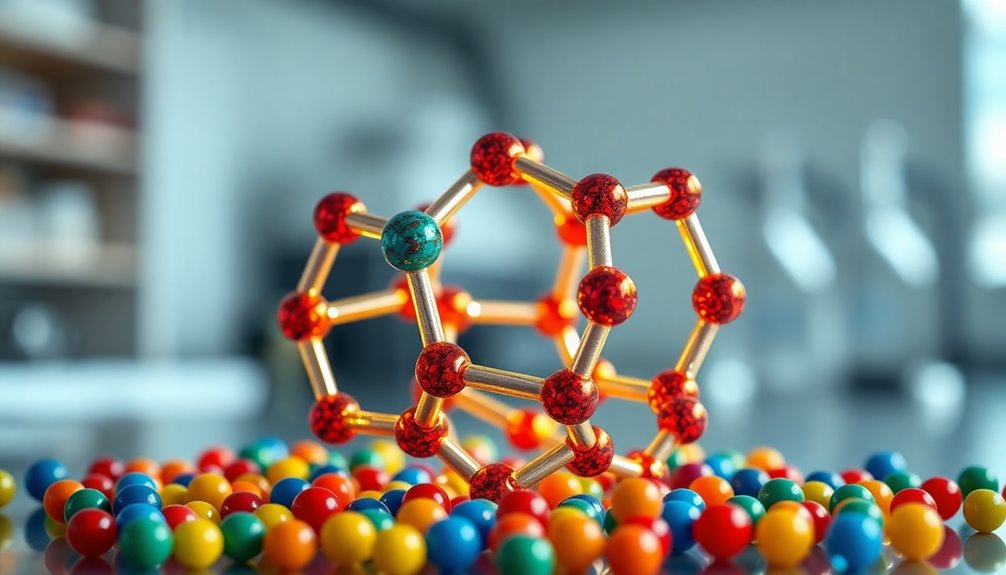
Understanding the types of aromatic compounds is fundamental for grasping their diverse applications and properties. Aromatic compounds can be classified into several categories:
- Homocyclic compounds like benzene, consisting solely of carbon atoms.
- Heterocyclic compounds that incorporate non-carbon elements such as nitrogen, oxygen, or sulfur.
- Polycyclic aromatic hydrocarbons (PAHs), formed by fusing multiple aromatic rings, with examples like naphthalene.
You'll also find aromatic amino acids, such as phenylalanine, significant to protein structure.
Substituted aromatics, featuring functional groups that alter their chemical behavior, include compounds like aspirin and toluene.
Each type showcases unique reactions and properties, making them essential in various industries, especially in producing benzene and toluene, which are critical for many applications.
Atypical Aromatic Compounds
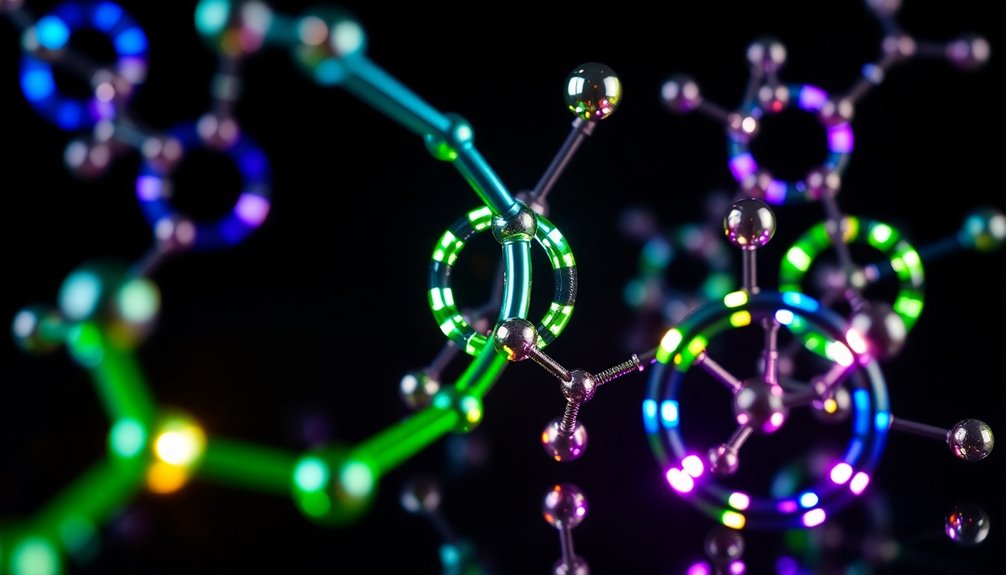
While many people associate aromatic compounds strictly with benzene and its derivatives, atypical aromatic compounds reveal a fascinating breadth of aromaticity beyond the conventional framework.
For instance, the cyclopropenyl cation and cyclopentadienyl anion showcase aromatic characteristics with fewer than six π electrons. Non-benzenoid compounds, like tropone and borabenzene, maintain aromatic properties through delocalized π systems, proving that aromaticity isn't limited to traditional structures.
Homoaromatic compounds exhibit aromatic stabilization despite interrupted conjugation by a hybridized carbon atom. Meanwhile, Möbius aromatic compounds, which twist cyclic structures, require 4n π electrons for stability.
Experimental studies, including NMR spectroscopy, have confirmed the aromatic nature of Si56− rings and revealed unique magnetic properties in various cyclic molecules, enhancing our understanding of aromaticity.
Importance of Aromaticity
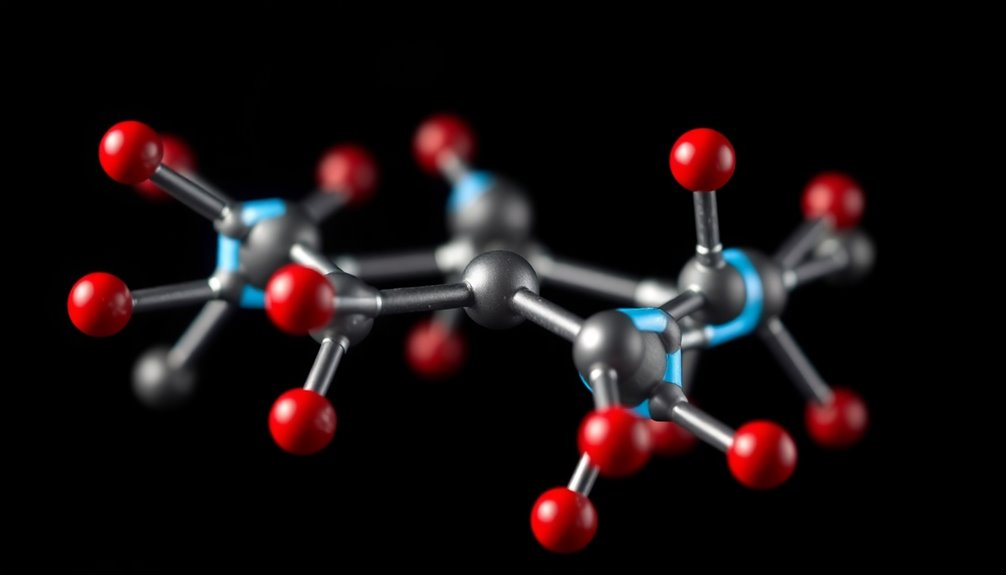
Aromaticity plays an essential role in chemistry, as it greatly enhances the stability of compounds. The delocalization of π electrons helps these compounds resist reactions that would typically affect non-aromatic systems.
Understanding aromaticity is key in various fields, including:
- The pharmaceutical industry, where many drugs are based on aromatic compounds with unique properties.
- Material science, influencing the design of innovative materials and catalysts.
- NMR spectroscopy, revealing distinct magnetic properties essential for studying molecular structures.
Applying Hückel's Rule (4n + 2 π electrons) allows you to predict if a cyclic compound will exhibit aromaticity, guiding the identification of potential aromatic compounds.
This stability and reactivity are vital for advancing both research and practical applications.
Applications in Chemistry

Aromatic rings play a significant role in pharmaceutical synthesis, forming the backbone of many essential drugs like aspirin and paracetamol.
Their unique properties also make them important in industrial applications, particularly in creating high-performance materials.
You'll find that understanding these applications can open up new perspectives in both chemistry and industry.
Pharmaceutical Synthesis Importance
In the domain of pharmaceutical synthesis, aromatic rings play an essential role as building blocks for many drugs, enhancing their biological activity and stability. Their unique structure allows for:
- Increased lipophilicity, boosting membrane permeability
- Tailored properties through electrophilic aromatic substitution
- Diverse functional groups that improve drug efficacy
Common pharmaceuticals, like analgesics such as aspirin and antibiotics like penicillin, rely on aromatic rings for their therapeutic effects.
The structural diversity that these rings offer facilitates the development of novel pharmaceutical agents, making them invaluable in drug discovery and development processes.
Industrial Chemical Applications
While many might not realize it, aromatic compounds are essential in various industrial applications, serving as the backbone for the production of essential chemicals. With around 35 million tonnes of aromatic hydrocarbons produced annually, these compounds influence numerous sectors.
| Application | Example | Impact |
|---|---|---|
| Dyes and Pigments | Textile coloring | Enhances visual appeal |
| Pharmaceuticals | Pain relief drugs | Improves healthcare access |
| Fragrance and Flavor | Perfumes and food | Enriches sensory experiences |
From benzene derivatives in dyes to synthetic fibers in consumer goods, aromatic compounds drive advancements in materials science. Their diverse roles underscore their significance across industries, making them indispensable in everyday life.
Experimental Evidence and Research
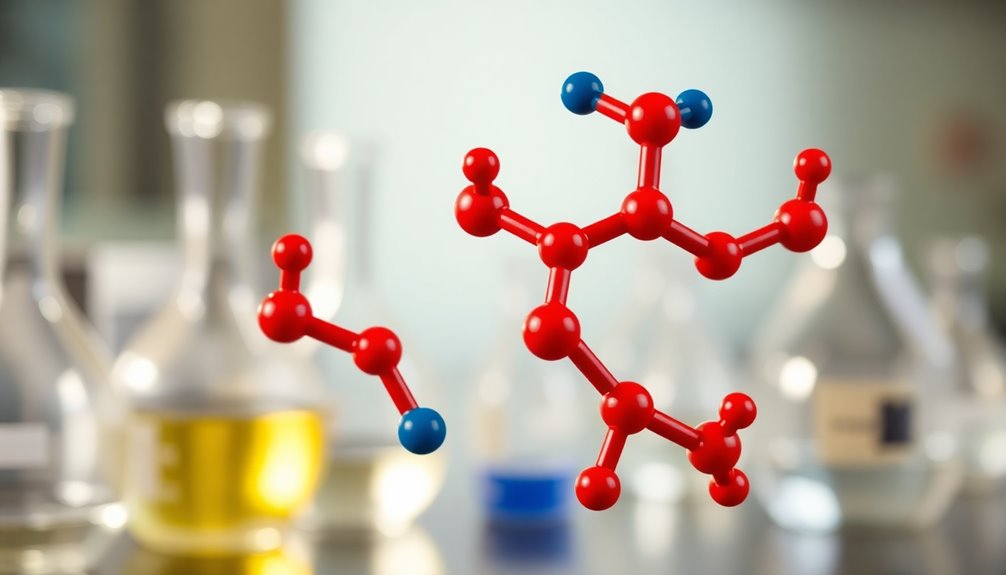
Experimental studies have revealed fascinating insights into aromaticity, demonstrating that compounds beyond traditional carbon frameworks can exhibit these properties. Techniques like Li NMR spectroscopy have shown that non-carbon analogs, such as Si56− rings, can display aromatic characteristics.
Research highlights include:
- The unique magnetic properties of cyclic molecules, reinforcing the concepts of delocalization and aromatic stability.
- The synthesis of Möbius hydrocarbons, showcasing the impact of symmetry and twist on aromatic properties.
- Investigations into tropone, expanding our understanding of aromaticity beyond benzenoid definitions.
Moreover, the concept of Y-aromaticity continues to spark debate, raising questions about the stability of various cations, including guanidinium.
These experimental studies collectively enhance our grasp of aromaticity across diverse molecular frameworks.
Frequently Asked Questions
What Is an Aromatic Ring in Chemistry?
You might wonder what makes an aromatic ring special. It's a cyclic structure with a loop of p orbitals, allowing π electrons to delocalize.
To be aromatic, the ring typically follows Hückel's rule, needing 4n + 2 π electrons for stability. This arrangement gives aromatic compounds unique properties, like increased stability and less reactivity compared to non-aromatic ones.
When you explore these rings, you'll discover their fascinating role in chemistry!
What Is Aromatic Ring and Non Aromatic Ring?
You'll find that aromatic rings are cyclic structures with a specific arrangement of electrons that provides stability and unique properties. They follow Hückel's rule, which states they must have 4n + 2 π electrons.
Non-aromatic rings, however, lack this electron configuration or planar structure, leading to instability.
While aromatic compounds, like benzene, engage in specific chemical reactions, non-aromatic compounds behave differently, reflecting their distinct structural characteristics.
What Is Aromatic in Simple Terms?
When you hear "aromatic," you might think of pleasant smells, but it refers to certain chemical compounds too.
Aromatic compounds contain a stable ring structure that allows electrons to move freely, giving them unique properties. These compounds often have distinct odors, which is why they're called aromatic.
Examples include benzene, known for its simplicity, and others like pyridine.
What Is the Difference Between a Benzene Ring and an Aromatic Ring?
A benzene ring is a specific type of aromatic ring, consisting of six carbon atoms arranged in a cyclic structure with alternating double bonds.
You'll notice that benzene has unique resonance stability, which gives it equal bond lengths.
On the other hand, an aromatic ring can include various cyclic compounds, not limited to benzene, such as naphthalene or pyridine.
Conclusion
In the grand symphony of chemistry, aromatic rings are the rock stars, dazzling us with their unique properties and vibrant structures. Their legacy stretches through history, transforming everything from dyes to pharmaceuticals. You can't underestimate their importance; they're the backbone of countless innovations. As you plunge into the world of aromatic compounds, remember that every ring tells a story, and each discovery could ignite a revolution in science. Embrace the magic of aromaticity—it's truly mind-blowing!

